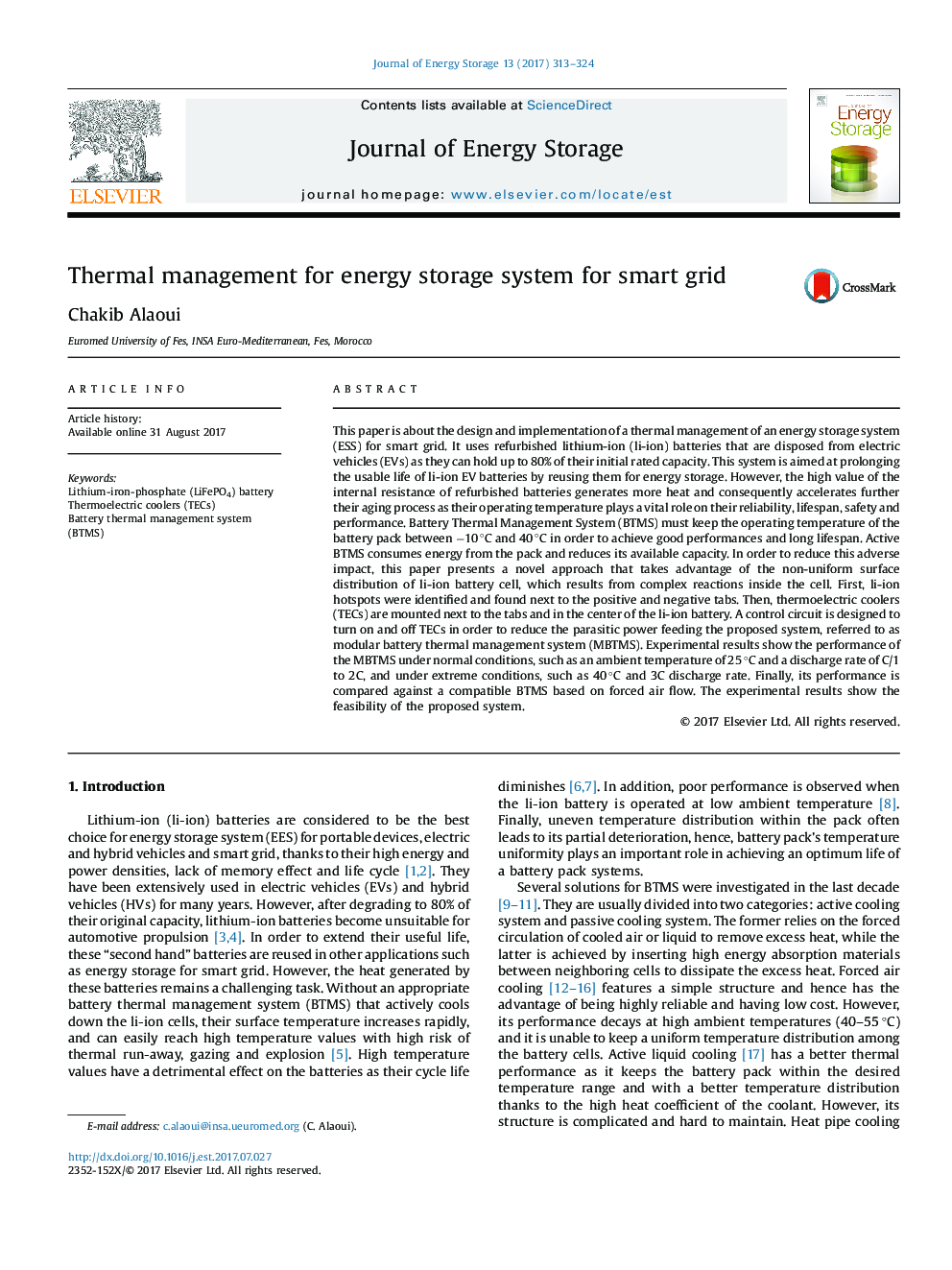| کد مقاله | کد نشریه | سال انتشار | مقاله انگلیسی | نسخه تمام متن |
|---|---|---|---|---|
| 5127345 | 1489009 | 2017 | 12 صفحه PDF | دانلود رایگان |
- +Â Lithium-ion batteries become unsuitable for vehicular traction application went they cannot hold more than 80% of their nominal capacity.
- Refurbished li-ion batteries from EVs have higher internal resistance, and hence generate more heat.
- Heating tests show non-uniform temperature distribution along the refurbished li-ion cells, the highest temperature values being next to the positive and the negative tabs.
- Thermoelectric Modules (TEM) are used to design a modular battery management system (BTMS).
- Experimental results show the feasibility of the proposed system.
This paper is about the design and implementation of a thermal management of an energy storage system (ESS) for smart grid. It uses refurbished lithium-ion (li-ion) batteries that are disposed from electric vehicles (EVs) as they can hold up to 80% of their initial rated capacity. This system is aimed at prolonging the usable life of li-ion EV batteries by reusing them for energy storage. However, the high value of the internal resistance of refurbished batteries generates more heat and consequently accelerates further their aging process as their operating temperature plays a vital role on their reliability, lifespan, safety and performance. Battery Thermal Management System (BTMS) must keep the operating temperature of the battery pack between â10 °C and 40 °C in order to achieve good performances and long lifespan. Active BTMS consumes energy from the pack and reduces its available capacity. In order to reduce this adverse impact, this paper presents a novel approach that takes advantage of the non-uniform surface distribution of li-ion battery cell, which results from complex reactions inside the cell. First, li-ion hotspots were identified and found next to the positive and negative tabs. Then, thermoelectric coolers (TECs) are mounted next to the tabs and in the center of the li-ion battery. A control circuit is designed to turn on and off TECs in order to reduce the parasitic power feeding the proposed system, referred to as modular battery thermal management system (MBTMS). Experimental results show the performance of the MBTMS under normal conditions, such as an ambient temperature of 25 °C and a discharge rate of C/1 to 2C, and under extreme conditions, such as 40 °C and 3C discharge rate. Finally, its performance is compared against a compatible BTMS based on forced air flow. The experimental results show the feasibility of the proposed system.
Journal: Journal of Energy Storage - Volume 13, October 2017, Pages 313-324
